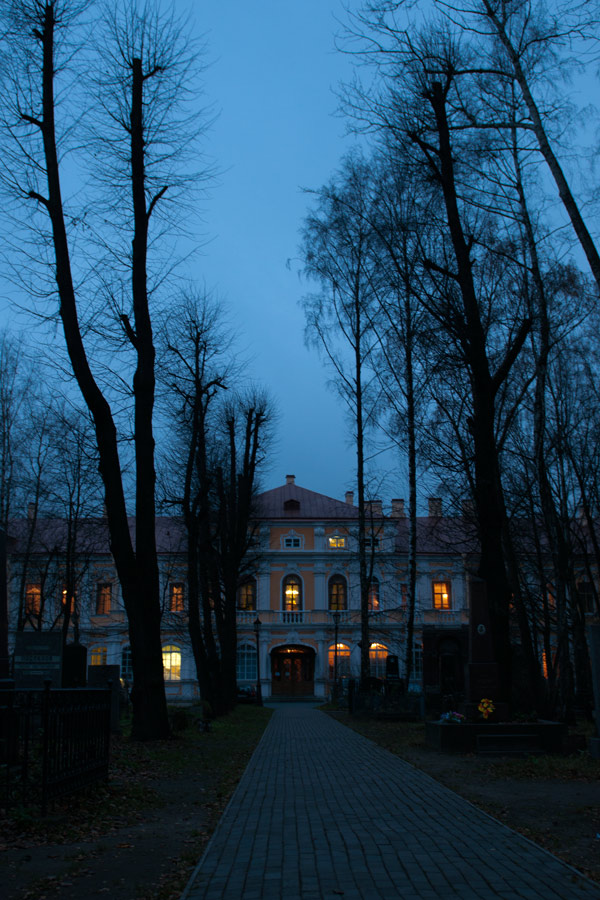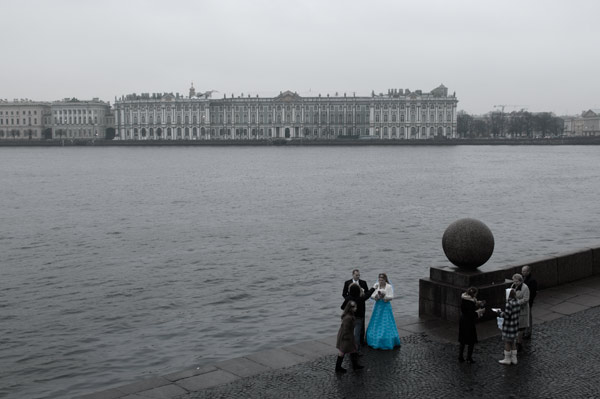The sun does shine in St Petersburg, even in November! On the 4th day of our trip we were rewarded with sunny weather combined with dramatic skies.
On our last day we decided to visit the Peter and Paul Fortress. It is the first and oldest landmark in St. Petersburg, built between 1712 and 1733 on Zayachy Island (Rabbit Island) along the Neva River. Both the cathedral and the fortress were originally built under Peter the Great.
We also knew that the fortress had served a sort of Russian "Bastille" being the prison for numerous aristocratic (such as "Decembrists" - aristocratic movement trying to establish constitution in the eraly 19th century) or simply dangerous prisoners such as Tadeusz Kościuszko fighting for independence of so-called "North-Western district" containing parts of nowadays Belarus, Ukraine, Poland & Lithuania, Tsarevich Alexis - Peter I son and even Marshal Josip Broz Tito - statesman of Republic of Yugoslavia, to name more resent characters.
Despite all these facts we never visited it during our previous visits to St. Petersburg so this time we decided to catch up.
 |
| Dramatic skies. Spit of Vasilyevsky Island and "Flying Dutchman" sailboat. |
 |
| View from Kronverk bridge |
 |
| Kids on Kronverk bridge |
 |
| View to the spit of Vasilyevsky Island from Zayachi Island |
From the Kronverk bridge you can see the Bell tower (with spire). It is the dominant feature of this cathedral and the fortress. Not only is it an architectural symbol, it is also a lightning rod protecting the cathedral.
 |
| General view of Zayachy island with bell tower |
We walked around the fortress walls. There is a nice walkway and at this time of the year instead of hords there was barely a young mother with a stroller or a jogger.
 |
The fortress wharf
|
Inside the walls there are numerous museums: wax figure exhibition, exhibition of armor, panoptikum... You can also rent replicas of historical costumes and take photos.
The cathedral's bell tower is the world's tallest Orthodox bell tower. Since the belfry is not standalone, but an integral part of the main building, the cathedral is sometimes considered the highest Orthodox Church in the world. ©Wikipedia
 |
| Within the fortress walls |
The sun came out and we walked along the lanes towards the cathedral.
 |
| The Peter and Paul Cathedral |
The cathedral houses the remains of almost all the Russian Emperors and Empresses from Peter the Great to Nicholas II and his family who were finally laid to rest in July 1998. ©Wikipedia
Even though according to Wikipedia...
The cathedral's architecture also features a unique iconostasis (the screen which separates the nave of the church from the sanctuary). ©Wikipedia
...we were not able to see it. The cathedral was locked and the only people who were let in were the ladies wearing working clothes who were obviously involved in the reconstruction work. Speaking of reconstruction, we were surprised to find out that...
When renovators were working to clean the angel upon the spire in 1997, they found a note bottle left in one of the folds of the angel's gown. In the note, renovators from 1953 apologized for what they felt was rushed and shoddy work (Soviet premier Nikita Khrushchev wanted the angel refurbished for the 250th anniversary of the city that year). ©Wikipedia
We really felt respect o those unknown renovators who felt sorry for doing a lousy job.
 |
| The cathedral seen across the main square |
 Walking along the fortress streets we found ourselves facing quite an unusual angle...
Walking along the fortress streets we found ourselves facing quite an unusual angle...






































